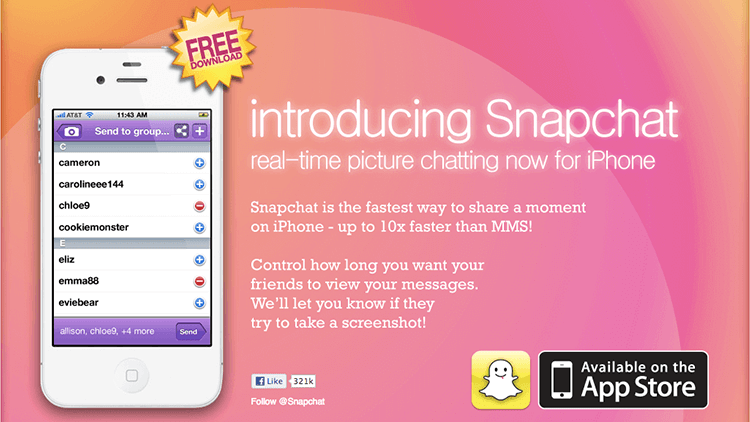
After being created by Evan Spiegel, Bobby Murphy, and Reggie Brown in 2011, Snapchat quickly rose to fame among the younger generations, i.e., millennials and generation z. Originally named Picaboo, Snapchat was launched in a dorm, and then later released in the App Store in the home of Spiegel's father.
As of June 2019, the app had over 210 million users that were active each day, a large jump from 190 million within the first few months of 2019. As of now, Snapchat is the most popular form of social media among teens. However, teens and young adults are not the only people using the social media platform, many celebrities and influencers use the platform to interact with fans, promote products, gossip, and to flaunt their lavish lifestyles.
The first aspect of the app that made it so appealing was that your photos and videos lasted from anywhere from 1-10 seconds and then disappeared forever. Since then, Snapchat has released new features to keep users entertained. This includes things such as Stories (October 2013), Geofilters (August 2014), filters or lenses (January 2015), Snap Streaks (March 2016), and Memories and Bitmojis (July 2016). They even made it to where your pictures and videos can last longer than 10 seconds, basically until the recipient clicks off. Users are able to be creative by adding filters, stickers, Bitmojis, and gifs to their pictures and videos to share with as many friends as they would like.
I believe that upon the release of Snapchat, the platform had the attention of many innovators and the early majority. In November of 2013, two years after its release, Mark Zuckerberg tried to purchase the platform for $3 billion but the offer was turned down. Later on, in May of 2016, Google reportedly offers to buy Snapchat for $30 billion, but again, the offer was rejected. These two innovators had the social status, access to other innovators, and financial ability to purchase the entire platform and risk failure. There were no reports of early adopters, as it took time for the app's popularity to rise and the addition of the stories for celebrities to have a major influence on other users' opinions of the app. Most other users were a part of the early majority, adopting a new form of social media and sharing it with friends just to have fun. These individuals typically held above-average social and financial status, which makes sense because it appears Snapchat was only originally available to iPhones, one of the most expensive of the smartphone choices.
https://www.oberlo.com/blog/snapchat-statistics
https://www.buycustomgeofilters.com/blog/snapchat-history-and-updated-timeline
https://en.wikipedia.org/wiki/Diffusion_of_innovations
No comments:
Post a Comment